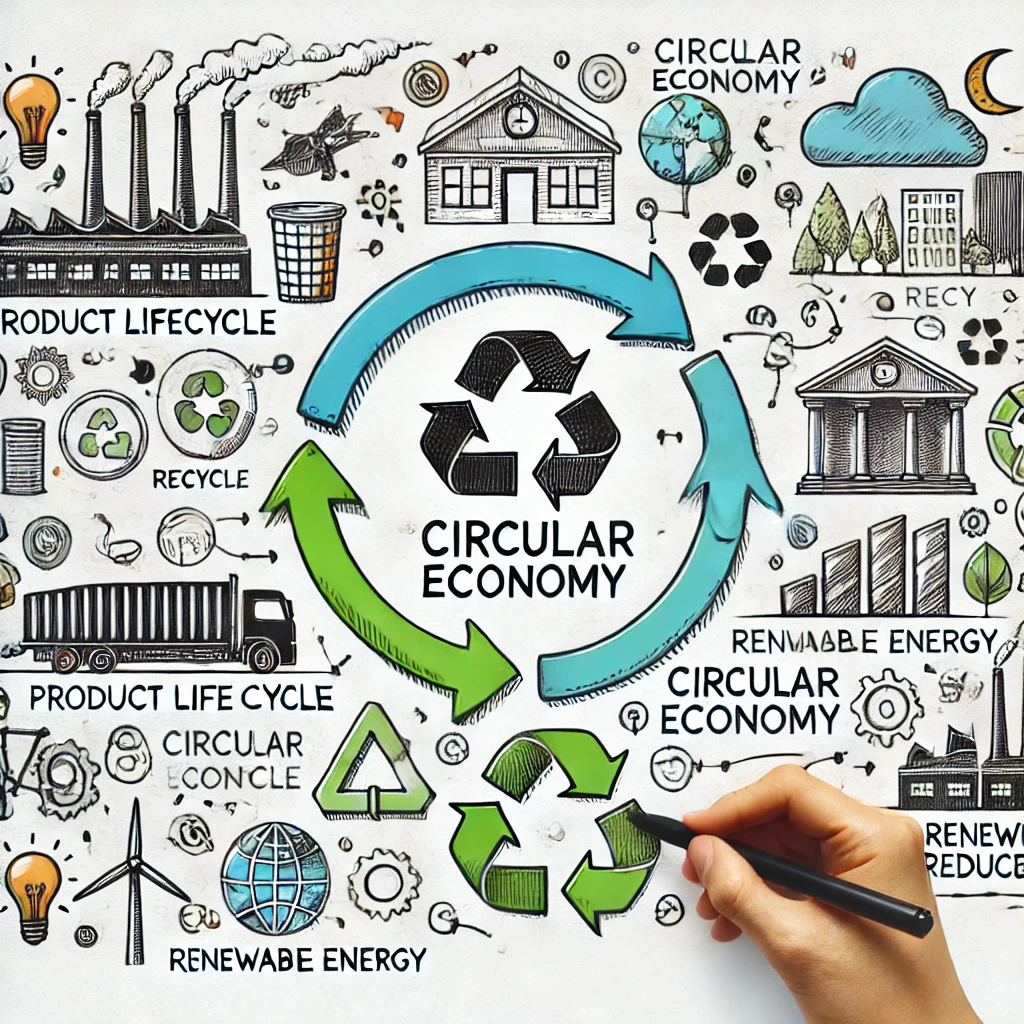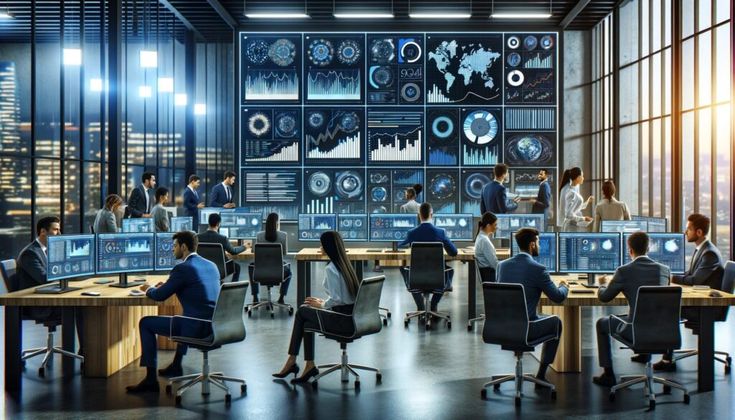The Role of Circular Economy in Redefining Business Models

In an era where sustainability is no longer a choice but a necessity, the circular economy has emerged as a transformative approach to business operations. Unlike the traditional linear model of “take, make, dispose,” which consumes resources at an unsustainable rate, the circular economy focuses on reducing waste, reusing materials, and creating a closed-loop system that benefits both businesses and the environment. By redefining how companies approach production, consumption, and disposal, the circular economy is reshaping business models across industries.
Understanding the Circular Economy
At its core, the circular economy is built on three key principles:
- Design out waste and pollution – From the start, products and processes are designed to minimize waste and pollution. This can include using recyclable materials, reducing energy consumption, and improving production efficiency.
- Keep products and materials in use – Products are designed for durability, repairability, and reuse. Instead of products being discarded after use, businesses can encourage refurbishment, resale, or recycling.
- Regenerate natural systems – The circular economy aims to improve environmental outcomes by promoting renewable energy and sustainable resource use, allowing natural systems to regenerate and flourish.
These principles challenge businesses to rethink their models and seek ways to reduce waste, use renewable resources, and extend the lifecycle of their products.
How the Circular Economy is Redefining Business Models
- Product-as-a-Service (PaaS) The circular economy has spurred the development of Product-as-a-Service (PaaS) business models. Instead of selling a product outright, companies retain ownership of the product and offer it as a service. This model allows businesses to maintain responsibility for product longevity, encouraging repairs, upgrades, and recycling. For example, companies in industries like electronics, home appliances, and furniture now offer leasing or subscription services for products, allowing customers to use them for a period and return them for refurbishment.Example: Philips has transitioned from selling lighting products to offering “light as a service.” Customers pay for the use of lighting, while Philips retains responsibility for installation, maintenance, and disposal, ensuring that products are reused or recycled.
- Design for Durability and Reusability Traditional business models often rely on planned obsolescence, encouraging customers to frequently replace products. However, in a circular economy, companies are increasingly adopting design for durability and reusability strategies. Products are built to last longer, and businesses offer services such as repair, refurbishment, and resale. This extends product lifecycles, reduces the need for raw materials, and helps businesses align with consumer demand for sustainable practices.Example: Patagonia’s “Worn Wear” program offers repairs and resells used outdoor gear, reducing waste while reinforcing brand loyalty.
- Waste as a Resource A cornerstone of the circular economy is turning waste into a resource. By reusing byproducts or recycling materials, businesses can reduce costs, minimize waste, and create new revenue streams. Upcycling and industrial symbiosis, where one company’s waste becomes another’s raw material, are increasingly common practices.Example: Swedish furniture giant IKEA has committed to using only renewable or recycled materials by 2030, transforming waste into resources for new products. Similarly, fashion brands are using textile waste to create new fabrics, reducing the environmental impact of manufacturing.
- Circular Supply Chains Companies are rethinking their supply chains to align with circular economy principles. In contrast to traditional linear supply chains, circular supply chains emphasize resource efficiency, closed-loop systems, and collaboration with suppliers to minimize waste and enhance product lifecycle management.Example: Dell is using a circular supply chain by recycling plastics from old electronics to create new products, such as laptop cases, reducing the need for virgin materials.
- Collaboration and Innovation The shift to a circular economy often requires collaboration across industries and sectors. Many businesses are partnering with startups, research institutions, and governments to innovate and develop new technologies or processes that enable circularity. Innovation in areas such as materials science, waste management, and renewable energy is driving the transition toward circular business models.Example: The Ellen MacArthur Foundation is a leading advocate for circular economy practices, collaborating with businesses worldwide to promote sustainable innovation through research, policy, and education initiatives.
- Consumer Demand and Brand Differentiation Consumers today are more environmentally conscious than ever. Businesses adopting circular economy principles are not only contributing to sustainability but also differentiating their brands. These companies are building trust and loyalty among eco-conscious consumers, driving long-term growth while aligning with the global shift toward sustainability.Example: Companies like Nike have introduced sustainable product lines, such as their “Move to Zero” initiative, which aims for zero waste in product manufacturing. By promoting circularity, Nike appeals to the growing market of eco-conscious consumers.
The Business Benefits of Circular Economy Adoption
- Cost Reduction: Circular models that emphasize resource efficiency can lead to lower operational costs by reducing waste, reusing materials, and minimizing energy consumption.
- Risk Mitigation: By relying less on finite resources, businesses reduce their exposure to price volatility and supply chain disruptions.
- New Revenue Streams: Circular economy practices, such as leasing, refurbishment, and recycling, open up new business opportunities.
- Enhanced Brand Image: Aligning with sustainability practices can boost a company’s reputation, build customer loyalty, and attract environmentally conscious consumers.
- Regulatory Compliance: As governments increasingly implement regulations aimed at reducing environmental impact, adopting circular practices helps businesses stay ahead of evolving policies.
Challenges and the Path Forward
While the circular economy offers numerous benefits, it also presents challenges for businesses. The shift from a linear to a circular model often requires significant investment in technology, infrastructure, and innovation. Additionally, changing consumer behaviors, building partnerships, and rethinking supply chains take time and resources.
However, the long-term gains of transitioning to a circular model—reduced environmental impact, cost savings, and new revenue streams—outweigh these challenges. As global awareness around sustainability grows, businesses that proactively adopt circular economy principles will be better positioned for future success.
Conclusion
The circular economy is more than just a trend—it’s a comprehensive approach that is transforming the way businesses operate. By redefining business models around resource efficiency, sustainability, and closed-loop systems, companies are not only mitigating environmental impact but also unlocking new opportunities for growth and innovation. As the world moves toward a more sustainable future, businesses that embrace the principles of the circular economy will be at the forefront of this transformation, driving both economic and environmental value.






Responses